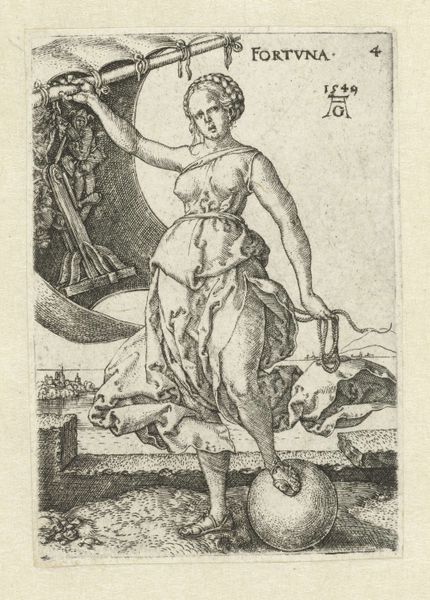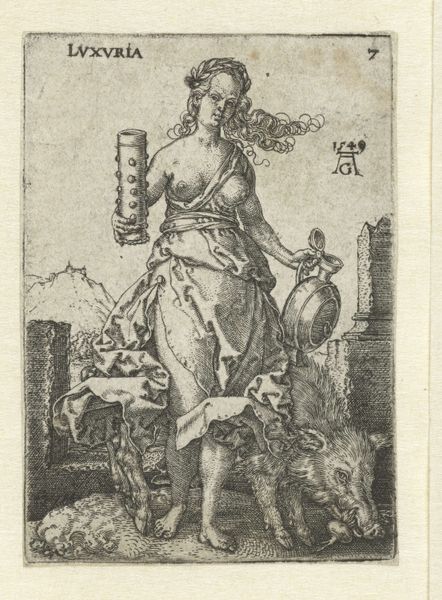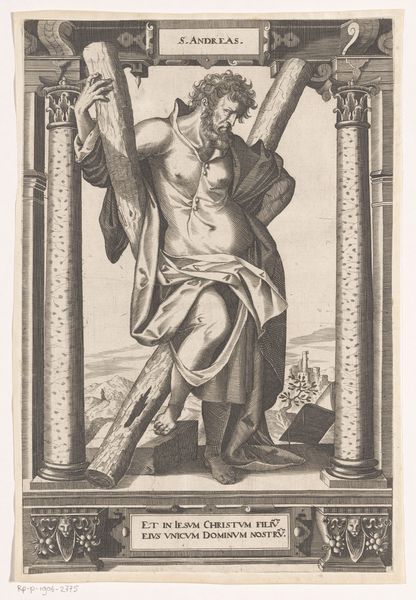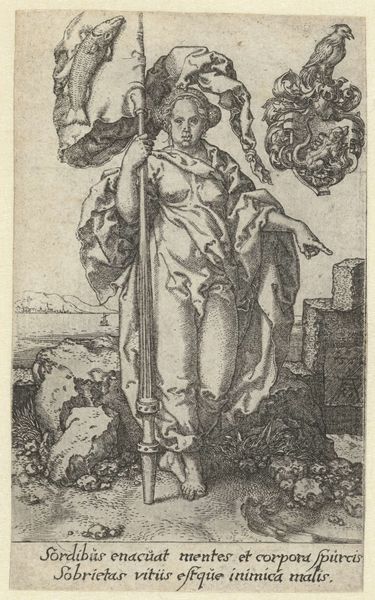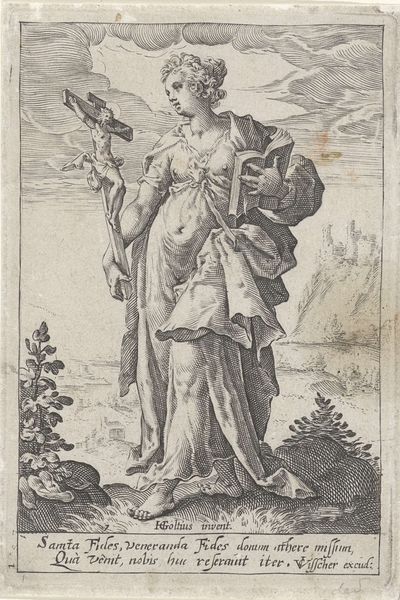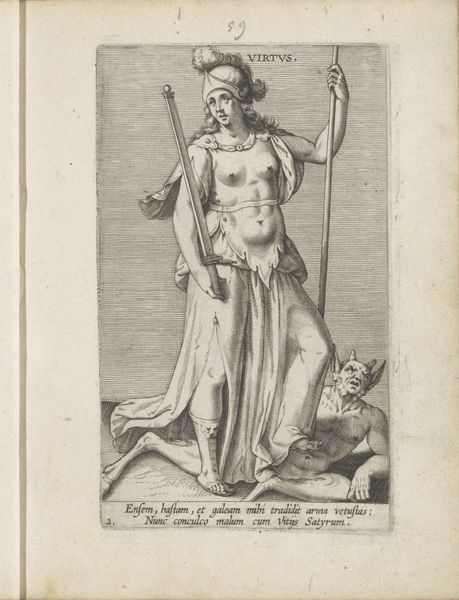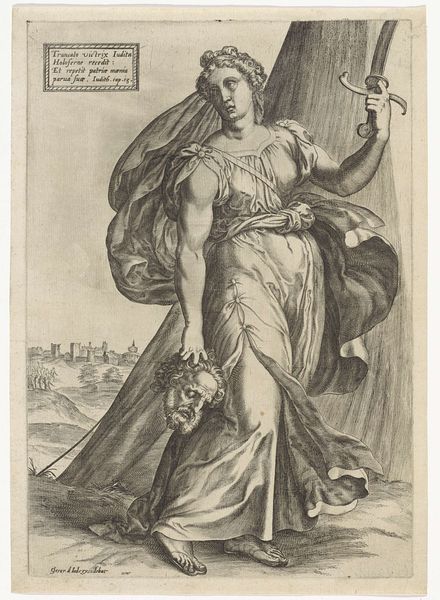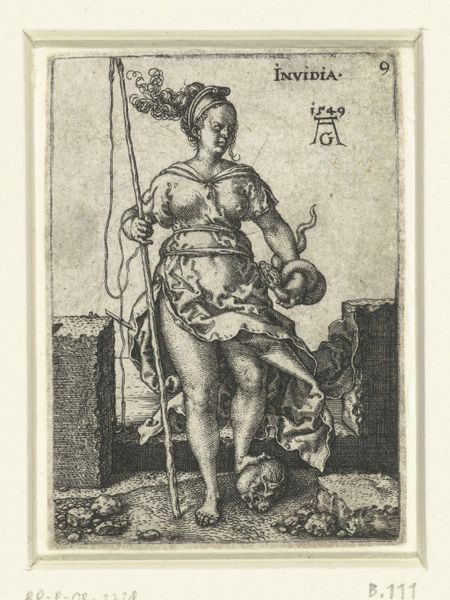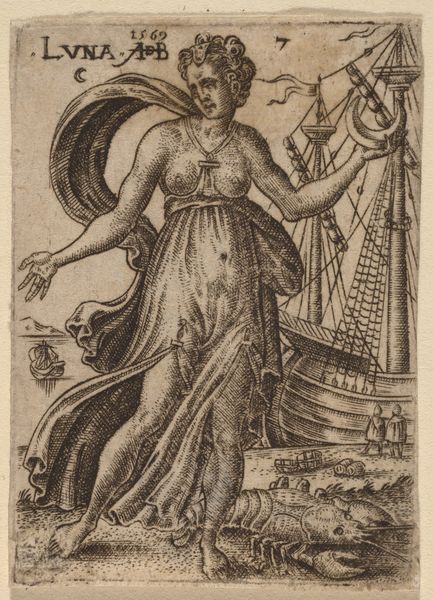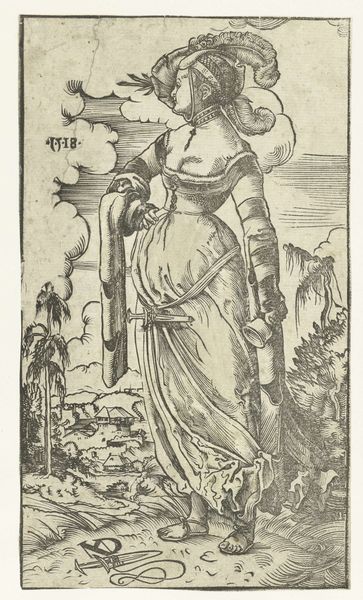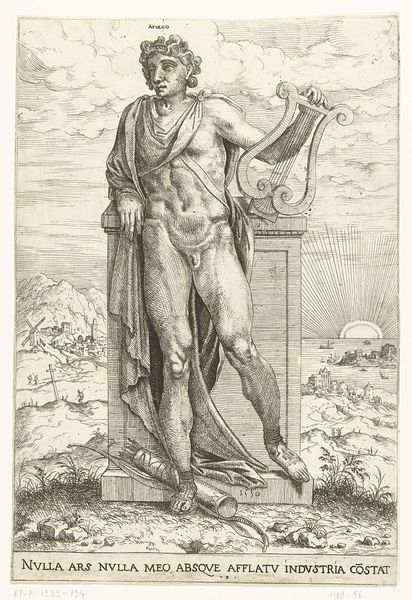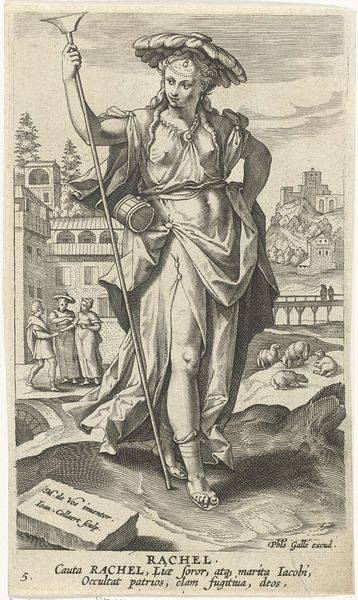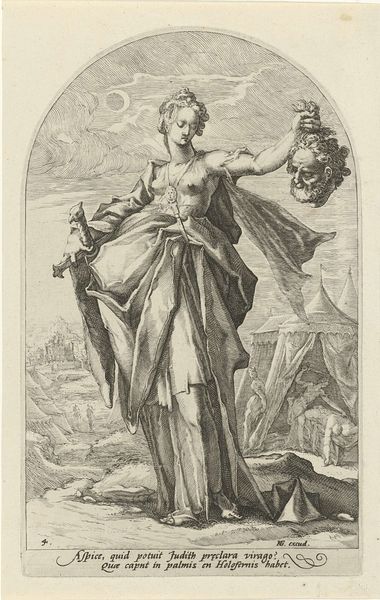
print, engraving
#
allegory
# print
#
figuration
#
11_renaissance
#
history-painting
#
northern-renaissance
#
engraving
Dimensions: height 70 mm, width 49 mm
Copyright: Rijks Museum: Open Domain
Editor: This is "Eendracht," an engraving by Heinrich Aldegrever from 1549, housed here at the Rijksmuseum. What strikes me is the contrast between the rough texture of the shield and the delicate details in the cityscape she's holding. How do you interpret this work? Curator: What interests me most are the conditions that made this image possible. Engraving, as a printmaking process, allowed for the mass production and distribution of images like this. Who was its intended audience, and how might this imagery have functioned within the social fabric of 16th-century Europe? What is she offering, and at what cost? Look at the ship, its destination. The city she presents is immaculate but idealized. Consider the labor needed to extract ore and create metal plates needed for engraving, for each strike of the engraver's burin. The social hierarchy of artistic labor. Editor: So you're focusing less on the allegorical figure and more on the actual making and use of the print? Curator: Precisely. I'm curious about how this print circulated, and the impact it had within the communities it reached. Who possessed this image? A single, affordable print or multiple? To what degree were Northern Renaissance artisans pushing into the territories traditionally controlled by unique art objects and their makers? And to what extent did they control production? Editor: That's fascinating! I hadn't considered the impact of printmaking on artistic labor at the time. It's easy to focus on the symbolism, but you're right; the materials and the means of production are just as significant. Curator: Exactly. Understanding the materiality allows us to see the artwork not just as a symbol but as a product of specific historical and social conditions, inextricably linked to labor and exchange. Editor: This has totally shifted my perspective. Now I’m curious to learn more about the societal implications of printmaking back then! Thanks.
Comments
No comments
Be the first to comment and join the conversation on the ultimate creative platform.
